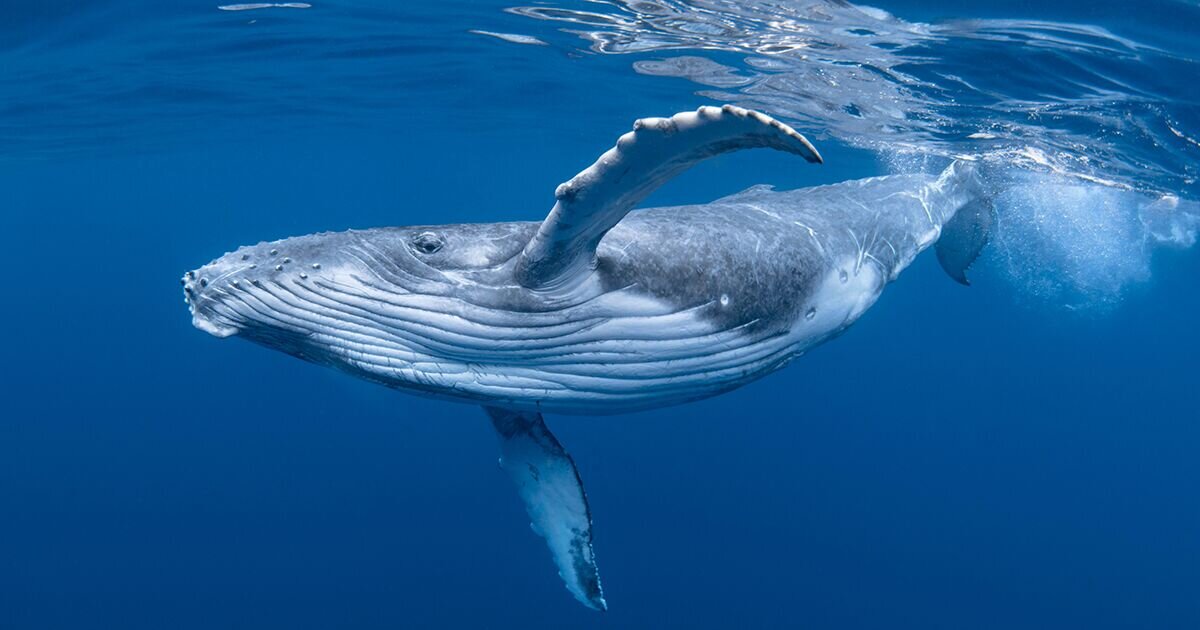THE SONGS THAT SAVED THE WHALES
BERMUDA — 1966 — The songs echoed through the oceans for millennia, but no one heard them in open air. The songs were lonely, haunting. Listen:
Biologist Roger Payne was captivated. The songs of the humpback whale, he said, were “the most evocative, most beautiful sounds made by any animal on Earth.”
But humpbacks were endangered. In 1900, some 100,000 roamed the seas but by 1965, just 7,000 remained. “They were headed for extinction, no discussion,” Payne said. If only the world could hear what he heard.
For a biologist, Payne had an unusual pedigree. His father was an engineer, his mother a professional violinist. Growing up in New York, he studied the cello but also began a lifelong fascination with the songs of nature, starting with the whippoorwill. “In the dead of night, when one would have thought of all kinds of reasons not to draw attention to yourself, it nevertheless did.”
Love of nature’s music took Payne to Harvard, where he studied bats and owls, then to Cornell’s famous ornithology lab to study bird songs. He might have stayed on land but for a whale that beached itself near Boston. When Payne went to the beach, he was shocked. Some local savage had carved his initials in the whale’s flank. A cigar was jammed in the blow hole.
“I removed the cigar and stood there for a long time with feelings I cannot describe. Everybody has some such experience that affects him for life, probably several. That night was mine.”
Determined to humanize both humans and nature itself, Payne turned his attention to whales. His interest took him to Bermuda where a Navy researcher, using underwater microphones to search for Soviet subs, gave him a tape of strange sounds from the deep. Knowing that humpbacks migrated off Bermuda, Payne made the link and listened. And listened.
He soon heard patterns, repeating every 10-20 minutes. The whales were singing! “All I was interested in was trying to get the world to think: ‘Hey, folks, we’re killing off the largest animals that have ever lived in the history of the planet. This is nuts!’ Then here comes this fabulously beautiful thing.”
Payne decided to release an album, but who would buy a biologist’s record? Wouldn’t a pop singer make a bigger impact?
On a summer night in 1969, Payne took his tape backstage at the New York Public Theater where Judy Collins was performing in “Peer Gynt.”
“He said, ‘My name is Roger Payne, I study whales,’” Collins recalled. “He asked me to think of something to do with these great half-ton leviathans, to find a way to make their songs known to the world.”
Though famous for sweet songs — “Both Sides Now” and “Someday Soon,” — Collins was on the cutting edge of the Sixties. She had sung in Mississippi during Freedom Summer, debuted songs by Leonard Cohen, and sang “Where Have all the Flowers Gone” while testifying at the trial of the Chicago 7.
Collins soon decided to sing a traditional whaling song “a cappella, in duet with these magnificent creatures. It would be the first time humpback whales were heard by most of the world.” The song appeared on Collins 1971 album “Whales and Nightingales.” Listen:
Though her lilting “Amazing Grace” became the album’s hit, “Farewell to Tarwaithe” had a far greater impact. Payne’s album of humpback songs sold 100,000 copies but “Whales and Nightingales” went gold, selling a half million. And a movement began.
In 1972, activists in Greenpeace played the humpback songs at a meeting. “That was the first time any of us had heard those recordings,” a founder recalled, “and it certainly was a huge factor in convincing us that the whales were an intelligent species here on planet Earth and actually made music, made art, created an aesthetic.”
Throughout the 1970’s, Payne played the humpback songs in schools, churches, conferences, even at the U.N. The songs traveled far, from the gold record on the Voyager spacecraft to National Geographic, which put them on a record inserted in 10 million copies. Humpback songs haunted a Star Trek movie and documentaries by David Attenborough and Jacques Cousteau. “Save the Whales” became a mantra of the 70s. And for once, the world listened.
In 1986, the International Whaling Commission banned commercial whaling. All but a few nations complied. Though the right whale is still endangered, humpbacks have made a comeback. Some 80,000 now roam the seas, singing.
Payne won a MacArthur genius grant for his work. Collaborating with his wife, Katherine, he has continued to study whale songs. Together the Paynes founded the Ocean Alliance to promote preservation of the world’s largest creatures. Yet Payne considers his work a chorus, with humpbacks singing harmony.
“My whole thought was if we can build whales into human culture, then we can save them,” Payne said. “And I think that’s happened. Good God, I’m certainly not the one who did all the building. There are thousands, literally thousands of other people who did vast and wonderful things.”















